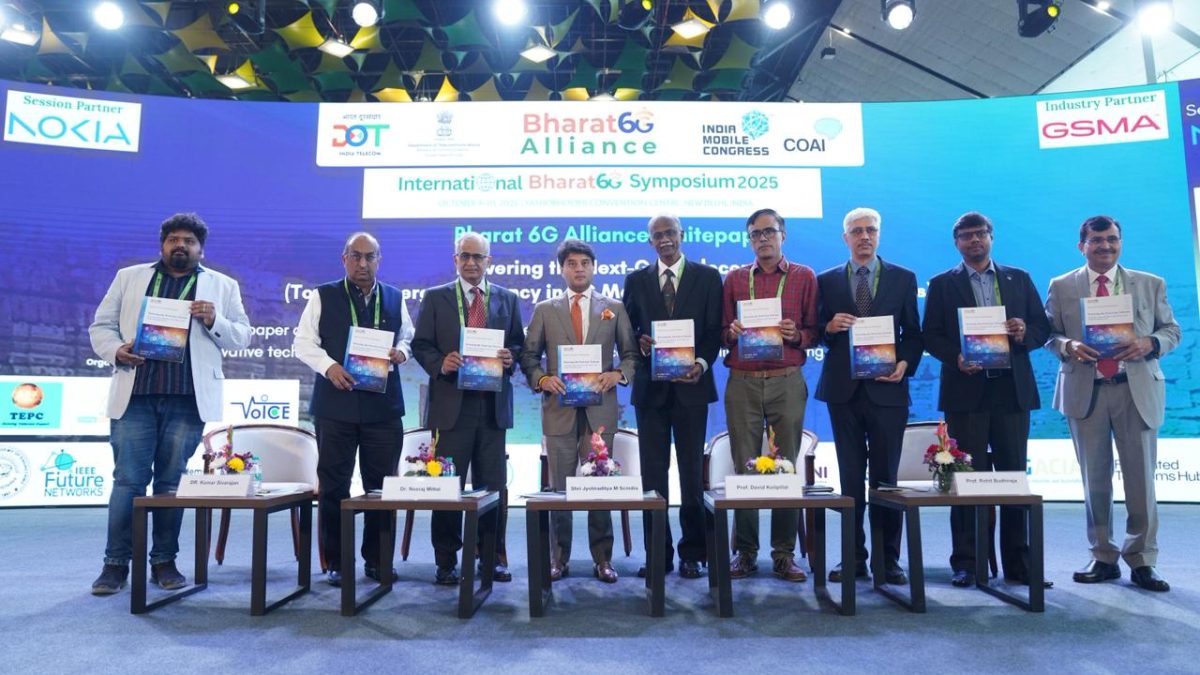A look-back at 2023 for Indian Telecom
India’s telecom sector witnessed significant developments in 2023. According to Lt. Gen. Dr. S.P. Kochhar, Director General, COAI, at the forefront of this narrative is the remarkable growth propelled by the nationwide rollout of 5G, setting unprecedented benchmarks. With over 3.97 lacs of 5G BTS sites established in more than 738 districts until November, India has risen to become a global 5G leader. Boasting 1.148 billion wireless subscribers as of August, the industry has witnessed a 1.9% growth from the previous year, with the average data usage per subscriber soaring to 17.4 GB per month.
Challenges in the Midst of Growth – The LTG conundrum
Despite the overall growth of the sector, the industry faces a major challenge, revolving around the lack of contribution to network costs from Large Traffic Generating (LTG) digital platforms/players. TSPs have been demanding a fair share from the LTGs, emphasizing on need for equitable cost distribution amid rising infrastructure expenses and increasing costs of network deployment and maintenance by the TSPs. In the meanwhile, the LTGs, despite earning both from subscription fees and advertising revenues, don’t contribute to the network costs financially. This situation places an undue burden on TSPs, hindering their financial sustainability and impeding further investments in network enhancements. The recent bill introduced in the US Senate is also an acknowledgement of the need for high traffic generating ‘Edge Service Providers’ to contribute to the costs of delivering affordable broadband to all citizens, and corroborates the stance of the Indian telecom sector.
Allocating the 6 GHz Band for 5G Advancements
The allocation of the 6 GHz spectrum band holds paramount importance for enhancing the quality and coverage of mobile networks in India. Allotting the full 6 GHz band to 5G communications represents a strategic move to address the escalating demand for data services across the country. This decision not only aligns with the rapid growth of data consumption but also positions 5G as a pivotal technology for wide-area applications, including drones, telemedicine, and smart cities. With the fact that 5G is faster and can handle more data than Wi-Fi, allocating the 6 GHz band is essential to strengthen India’s digital infrastructure for future advancements. The historic agreement reached at the recent World Radiocommunication Conference 2023 held in Dubai, to open this spectrum band for International Mobile Telecommunications (IMT), vindicates the global acknowledgement of the demand by Indian TSPs to allocate this potent band for vital use in 5G, 5G Advanced and the future 6G.
Other Major Issues Demanding Attention
Pending issues, such as the second phase of 5G spectrum allocation, Right of Way (RoW) permissions, high levies and taxes, continue to pose challenges to the telecom sector. TSPs advocate for a more supportive regulatory environment and seek resolution on these matters to ensure continued success. Additionally, the high cost of commercial electricity tariffs for telecom emerges as a challenge, impacting the sector’s investment and growth. There is a pressing need for the government to address these issue to ensure a robust and evolving telecom ecosystem, supporting the nation’s economic growth.
Noteworthy developments in 2023
Indian TSPs have completed their minimum 5G roll-out obligations in each of the 22 Licensed Service Areas in India in a timespan of just 10 months, leading to positioning India as the second largest 5G network in the world. This achievement showcases the industry’s commitment to technological advancement in alignment with the vision of ‘Digital India’.
The advent of 6G technology marked another a pivotal moment in India’s telecom evolution, propelling the nation towards becoming a global leader in the digital frontier. Hon’ble Prime Minister Shri Narendra Modi’s release of India’s 6G Vision document outlined the nation’s ambitious goals, including a targeted deployment of 6G by 2030. Establishing a high-level panel of experts to evaluate 6G’s potential and the establishment of 6G labs by industry leaders like Nokia and Ericsson signify a collective effort to shape the future of telecom in India and contribute significantly to global 6G research and standardization.
The introduction of the Telecommunications Bill 2023 marked another landmark moment, wherein the Government has made enabling provisions in RoW towards ensuring a robust telecom infrastructure and availability of uninterrupted digital connectivity for the citizens. Besides, focus on clarification and specification of penalties designed to increase industry confidence and increase ease of doing business, replacing ‘license’ with ‘authorization’ to simplify the overall regulatory landscape for telecom services, and strict provisions made for unlawful interception of messages or unauthorized access to the same to help ensure national security, are progressive steps for India’s digital communications sector.
Other notable developments in 2023, such as TRAI’s recommendations for enhancing telecom infrastructure in the Northeastern States and progressive RoW rules introduced by the Ministry of Defence, indicate a collective momentum towards addressing challenges and fostering sustainable growth in the sector. Additionally, the extension of MTCTE implementation timelines and TRAI’s recommendations on submarine cable landing, reflect a multifaceted approach aimed at shaping a robust and resilient telecom landscape for the nation.
Looking Ahead: 5G Leadership and Regulatory Progress
As India asserts its global leadership in 5G, the telecom industry anticipates a dynamic evolution of use cases. The industry’s expectations revolve around leveraging 5G for a multitude of applications and fostering an environment that takes India towards a digitally empowered future. Industry stakeholders also look forward to a collaborative effort with LTGs to develop high-quality networks and a responsible fair-sharing model, ensuring sustainable growth for the entire digital ecosystem. The evolving regulatory landscape is also expected to play a pivotal role in addressing challenges, providing a supportive framework for innovation while maintaining fair competition.








